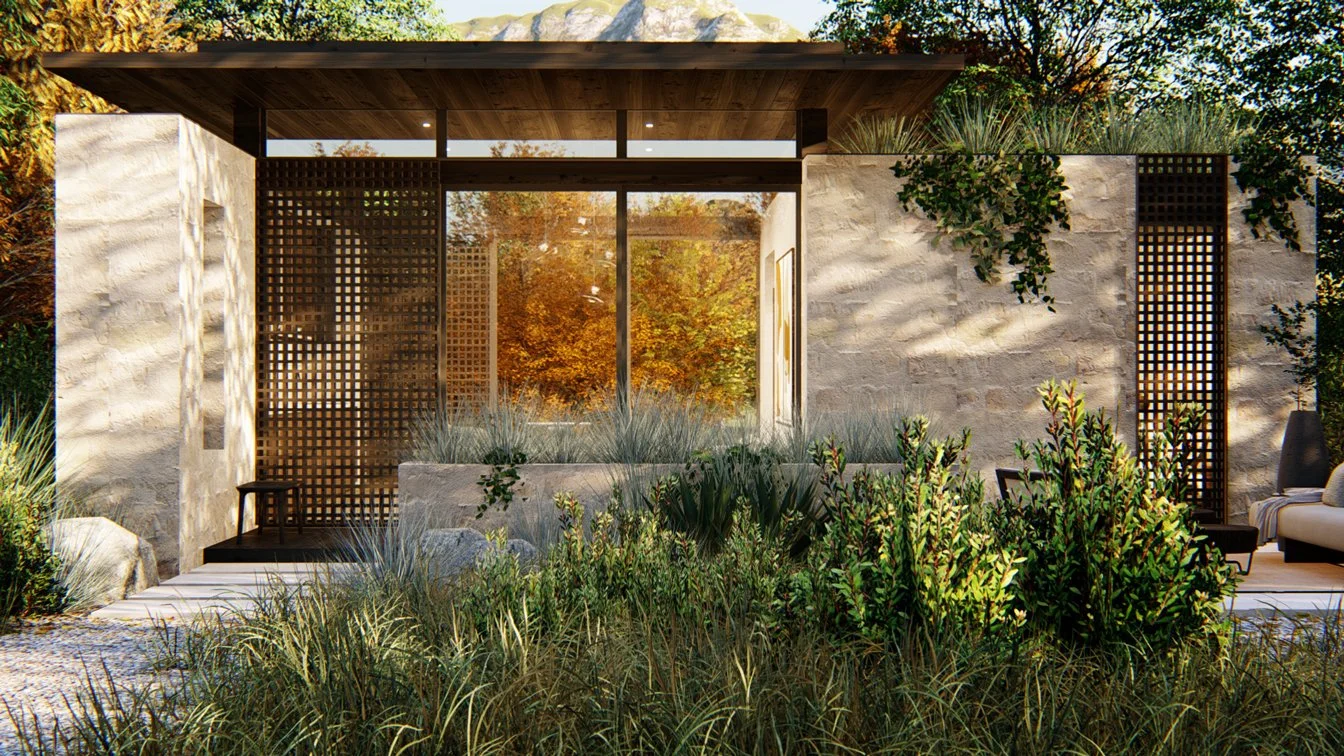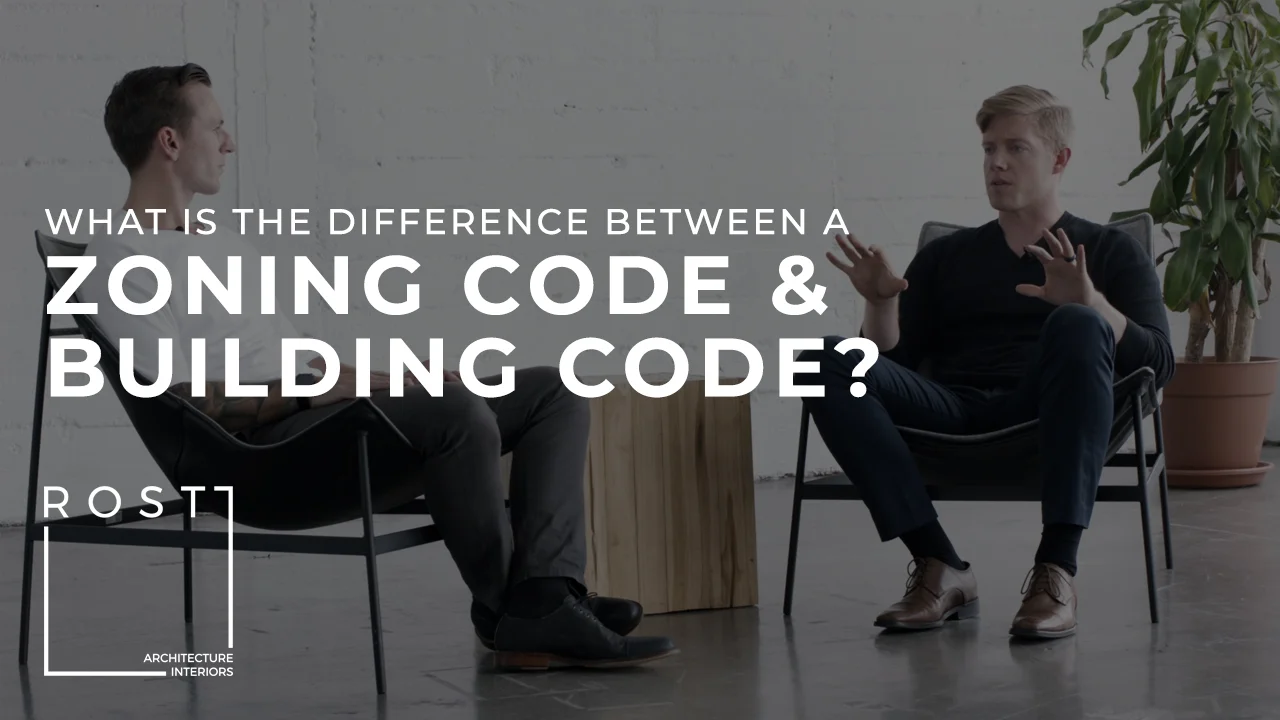What You Should Know About The New California A.D.U. Laws For 2020
Next year will be big for ADUs in California. On January 1, 2020 a series of laws will go into effect that revise and relax the laws governing ADUs. The new laws are intended to help address the housing shortage in California and make ADU development easier. For developers, investors and homeowners these laws will open up a range of investment possibilities. and increase the potential to earn supplemental reoccurring income.
The four laws that have the most impact on ADU development are Assembly Bill (AB 881), Assembly Bill (AB 670), Senate Bill 13 (SB 13), and Assembly Bill 68 (AB 68). After studying each of these laws, we’ve extracted the key points to help summarize the new regulations. Below are our takeaways from each of the laws:
Assembly Bill No. 881, Bloom
Link to the assembly bill

Rost Architects Villa A 800 Interior
Main Takeaways:
The maximum setback for an ADU would be 4’-0”. Local authorities can no long enforce large setbacks on ADUs.
If an ADU is created in an existing structure i.e. a garage, at the same size, the local agency cannot require replacement parking to be provided if the ADU replaces the parking spaces. For example, if you build an ADU in an existing two car garage. The two parking spaces do not need to be put somewhere else on the lot.
There is no more maximum or minimum size for an ADU based on the percentage of the primary residence. In the past local jurisdictions could limit the size of an ADU based on a percentage of the primary residence.
The local permitting agency must act on the submittal of an application for an ADU within 60 days on a ministerial CEQA exempt basis. (Previously it was 120)
Local authorities cannot impose owner-occupancy requirements on the construction of ADUs. In other words, the owner of the property does not have the live in the primary residence or the ADU on the lot. These can both be rental units and the owner of the property can live elsewhere.
Clarifies “public transit” to mean both bus stops and bus routes within a half mile walking distance from the ADU.
Assembly Bill No. 670, Friedman
Link to the Assembly Bill
Main Takeaways:
Any deed or covenant prohibiting ADUs is void and unenforceable on a single family lot.
An HOA , CC&R or neighborhood group cannot prevent you from building an ADU on a single family lot.
This bill is going to have a big impact in many of the coastal communities of Southern California. Most of these communities have strict HOAs or CC&Rs that restrict ADUs. Bill 670 will make these unenforceable.
Senate Bill No. 13, Wieckowski
Link to Senate Bill
Main Takeaways:
Agencies cannot impose impact fees on ADUs under 750 SQFT.
The applicant on the application to build the ADU does not have to be an “owner-applicant” of either the primary residence or the ADU.
Assembly Bill No. 68, Ting.
Link to the assembly bill
Main Takeaways:
This law allows for ADUs as well as Junior ADUs on lots where certain access, setback and other criteria are met. This means that there could be up to three units on a single property.
What will result from these new laws? We would expect more homeowners and investors building ADUs on their properties. The reduced friction in the permitting process and relaxed code requirements means increased potential to earn supplemental income, increase your property value and explore new investment strategies. Don’t be surprised if you see investors and developers separating their properties into three rentals (Primary Residence, ADU, and Junior ADU) and collecting income on each of them individually.
If you are interested in exploring how you can add an ADU to your property, Rost Architects offers a wide range of ADU designs in different sizes and styles. Visit www.rostarchitects.com/adu-plans to see our ADU collections. Customization and site planning is also available for your unique lot. Contact us at www.rostarchitects.com/contact-rost for more information. Check out the videos below for a walk-through of our ADU designs. The gallery on the top of the page showcases some of our latest ADU designs.
We strive the provide our clients with the most accurate information possible. The above takeaways are our interpretations of the new revaluations, if you notice any errors, inconsistencies or incorrect interpretations please notify us at Mitchell@rostarchitects.com.
Why are so many homeowners building an ADU on their property? After designing and building many ADUs, here are the most common reasons we’ve seen clients build an ADU. If you are interested in building an ADU on your property, click the Get Started button below.
If you are an Orange County property owner, you may be interested in the new loan program aimed at helping homeowners build an ADU on their property. Orange County Housing Finance Trust has developed a program to encourage property owners to invest in an ADU by providing access to low-interest, deferred, partially forgivable loans for qualified owners.
Several solutions have been implemented to help address California’s housing crisis and create more affordable housing options for California’s low—to mid-income residents. Allowing Accessory Dwelling Units to be added to single-family residences are steadily becoming one of the most notable and widely utilized methods by homeowners all over the state.
Building an ADU can be complicated. We recommend working with a qualified local Architect who has experience dealing with cities, approvals, and general contractors to help guide you through the process. Having a trusted, reliable team who has been through the process can alleviate many potential headaches and can help get your project off on the right foot.
Thinking about designing and building a custom home? To successfully complete your project, many different people will need to be involved and bring their individual expertise to the table. The quality of your project team will largely determine the outcome of your home.
Should you build your home from metal studs? What are the positives and negatives of metal stud construction? Over the past few years, we’ve had more and more clients ask about building their custom home from metal studs. Read the article to hear our un-biased opinions on the positives and negatives of metal stud construction.
Learn our five tips for building a custom home. These can save you time, money and headache during your project.
Selecting the right Architecture firm for your residential project can be difficult. Depending on the project, it can often mean entering into a 1-3 year relationship. During this time there will be challenges and hurdles to overcome. You will be working closely with your project team therefore, it is critical that you can communicate effectively and your personalities are compatible.
In our custom homes, the kitchen counter material is often one of the first selections made in the finish pallet. Kitchen surfaces are usually focal points in our designs and set the tones, textures and feeling for the rest of the materials in the space. The surfaces are used and engaged with daily, therefore it is critical to get the material selection right in terms of aesthetics and functionality. The article outlines some of the most common materials we use for kitchen counter tops and the pros/cons of each material.
An air tight, highly insulated building envelope is one of the most effective methods for helping to reduce your homes energy consumption and lower your carbon footprint. Therefore, the type of insulation you decide to use in your home is critical. Learn about the different types of insulation and the pros/cons of each type.
Home Battery technology has been steadily improving over the past few years but has it advanced enough? Learn about the current state of the technology and if it makes sense for your home.
Do you want to build a custom home? Learn about the major milestones in the construction process. This article gives a general breakdown of the process for homeowners.
What do the fields of wellness and architecture have in common? Wellness is becoming a daily active pursuit for many. With all the buzz around the topic, one thing we don’t hear about much is how the buildings and spaces we inhabit daily, impact our well being over time.
Learn why you should build your home net zero energy. Buildings account for nearly 40 percent of our total energy consumption and CO2 production. By reducing the energy your home uses, you will be helping to reduce our overall carbon footprint.
Learn our top six reasons why you should install a green roof on your net zero home.
Learn the fundamentals for sizing your solar panel system based on your energy usage and location.
One of the fundamentals for designing a sustainable home is to create a well insulated and air tight envelope. Learn about Insulated Concrete Forms and how they can help create a more sustainable and resilient building.
Learn about how many of the coastal communities in Southern California administer the design review process. For more information on the design review process, specifically in Laguna Beach, check out our article at https://www.rostarchitects.com/articles/2018/4/20/five-things-you-need-to-know-about-building-a-house-laguna-beach
Learn three fundamental ways to design a low carbon footprint home. Rost Architects uses their Villa A prototype to illustrate the concepts.
Rost Architects explains seven things you should look for when buying land to build your custom home. To learn more, check out the article here.
Learn why it is important to understand the “General Conditions” in the contract for construction when building your custom home.
Check out the latest article from our interiors group describing six strategies we use to create minimal interiors in our projects.
After the recent fires in Northern and Southern California the reality of wildfires and their level of potential destruction is more evident than ever. Learn seven methods we implement in our projects to design fire resistive homes.
For California residents, specifically property owners interested in earning supplemental income and increasing the value of their property, it is critical to understand the new legislation passed on ADU’s
Watch Rost Architects interview on building along the California Coast and dealing with the California Coastal Commission.
Watch Rost Architects interview about how we begin the design process using site and context.
Watch Rost Architects interview where we discuss the difference between the building code and the zoning code. Understanding the difference is important for home owners during the design and permitting process.
Watch Rost Architects interview where we discuss the importance for a real estate development team to have an architect and broker on board.






































